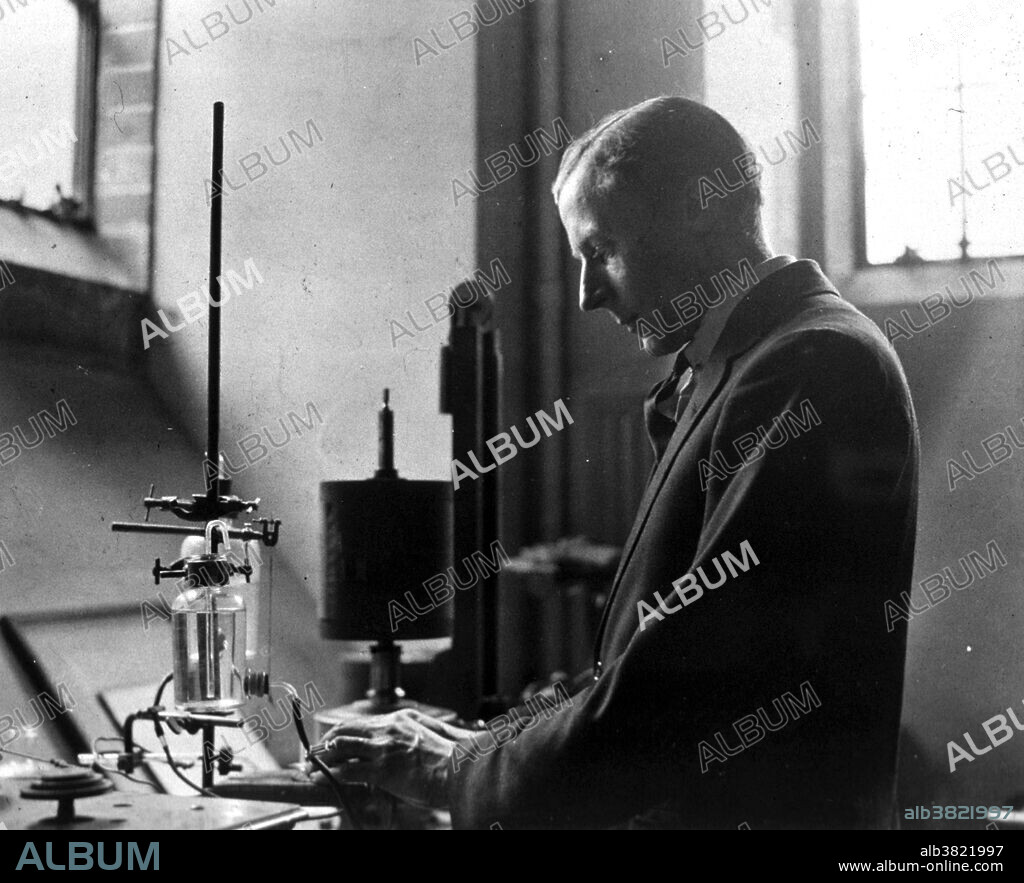alb3821997
Edgar Adrian, English Electrophysiologist

|
Añadir a otro lightbox |
|
Añadir a otro lightbox |



¿Ya tienes cuenta? Iniciar sesión
¿No tienes cuenta? Regístrate
Compra esta imagen.
Selecciona el uso:

Título:
Edgar Adrian, English Electrophysiologist
Descripción:
Ver traducción automática
Edgar Douglas Adrian, 1st Baron Adrian (1889-1977) was an English electrophysiologist and recipient of the 1932 Nobel Prize for Physiology, won jointly with Sir Charles Sherrington for work on the function of neurons. An accidental discovery by Adrian in 1928 proved the presence of electricity within nerve cells. A key result, published in 1928, stated that the excitation of the skin under constant stimulus is at first strong but decreases over time. The sensory impulses passing along the nerves from the point of contact are constant in strength, yet are reduced in frequency over time, and the sensation in the brain diminishes as a result. Extending these results to the study of pain causes by the stimulus of the nervous system, he made discoveries about the reception of such signals in the brain and spatial distribution of the sensory areas of the cerebral cortex in different animals. These conclusions lead to the idea of a sensory map, called the homunculus, in the somatosensory system.
Crédito:
Album / NLM/Science Source
Autorizaciones:
Modelo: No - Propiedad: No
¿Preguntas relacionadas con los derechos?
¿Preguntas relacionadas con los derechos?
Tamaño imagen:
3600 x 2917 px | 30.0 MB
Tamaño impresión:
30.5 x 24.7 cm | 12.0 x 9.7 in (300 dpi)
Palabras clave:
1889 • 1928 • 1932 • BLANCO Y NEGRO • CIENCIA • CIENTIFICO • DESCUBRIDOR • ELECTRICIDAD • EUROPEA • EUROPEAS • EUROPEO • EUROPEOS • EXPERIMENTOS • EXPLORADOR • FAMOSA • FAMOSO • FIGURA • FISIOLOGIA • FOTO • FOTOGRAFIA • GANADOR DEL PREMIO NOBEL • GENTE • HISTORIA • HISTORICO • HOMBRE • HOMBRES • IMPORTANTE • INGLES • MASCULINO • PERSONA • PERSONALIDAD • PERSONALIDADES • PORTRAIT • PREMIO NOBEL • RETRATO DE HOMBRE • RETRATO • S. XX • SIGLO XX
 Pinterest
Pinterest Twitter
Twitter Facebook
Facebook Copiar enlace
Copiar enlace Email
Email
